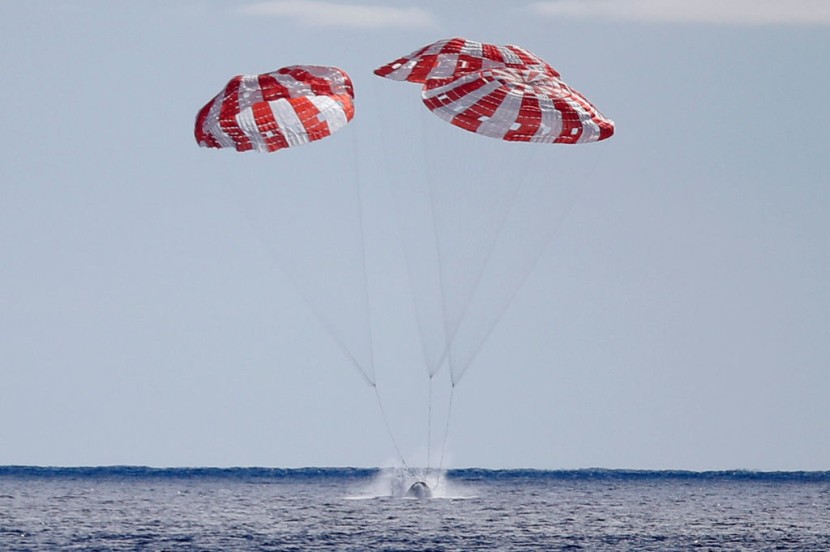
NASA's Orion spacecraft successfully splashed down in the Pacific Ocean after an epic moon trip that resulted in a record-breaking moment, marking a historic achievement for the space agency.
Space authorities have safely brought home the next-generation astronaut ship after its near-26-day mission to orbit Earth's satellite. The Orion capsule landed somewhere in the Pacific Ocean after going through a burning hot re-entry into our planet's atmosphere and descent where it used parachutes to slow itself down.
Orion Spacecraft Returns Home
Due to the mission being a test, no astronauts were riding inside the spacecraft, but that will change in future missions where humans will once again head into the cosmos. The space agency is continuously planning more complex missions with the Orion spacecraft.
Splashdown.
— NASA (@NASA) December 11, 2022
After traveling 1.4 million miles through space, orbiting the Moon, and collecting data that will prepare us to send astronauts on future #Artemis missions, the @NASA_Orion spacecraft is home. pic.twitter.com/ORxCtGa9v7
This is a live view of the Earth from a distance of 15,000 miles away.
— NASA (@NASA) December 11, 2022
The @NASA_Orion spacecraft is mere hours away from arriving home. #Artemis pic.twitter.com/jyq7Hnv0Zp
These ventures would most likely play out in late 2024 and include, in 2025 or 2026, missions that will seek to put humans back on the lunar surface. The last time that a person was able to step foot on the moon was exactly 50 years ago by the crew of the Apollo 17 mission, as per BBC.
Now, NASA's latest mission is called Artemis, who, in Greek mythology, was the sister of Apollo. The space agency's administrator, Bill Nelson, said that during the Apollo mission, they were able to make the impossible possible.
The official now said that they are trying to do it once more, but for a different purpose of going to the moon to learn to live, to work, to invent, and to create. These are things that aim to go out further into the cosmos to explore the vast universe.
According to NASA, the uncrewed Orion spacecraft allowed engineers to test its mettle in the harsh environment of deep space before live human beings begin flying to the lunar surface. While the crew cabin was empty of people, it was filled with data-collecting torsos and a manikin, deep space biology experiments, an official flight kit, a voice-activated technology demonstration, and a zero-gravity indicator, Snoopy.
Read Also : Rare Cosmic Collision of Stars Within Black Hole Provides Crucial Information About Gamma-Ray Bursts
Helping Future Space Missions
Furthermore, there are several extras placed inside the Orion spacecraft's cabin for other purposes, from lasting tributes to colleagues, to nods to the space agency's Apollo history, and even puzzles that have a secret meaning, which is commonly known as "Easter eggs."
Many of the payloads that Orion was carrying were designed to help NASA experts learn how to protect future astronauts and obtain information about the effects of deep space on the human body. The flight kit items were meant to help provide educational or cultural engagement to the crew on board. However, adding extras has been a tradition that dates back to early space exploration.
The Orion capsule that traveled back home struck the planet's atmosphere at 32 times the speed of sound and endured temperatures of 5,000 degrees Fahrenheit. Upon splashing down, a Navy ship quickly moved in to recover the spacecraft and its silent occupants.
The spacecraft had a return speed of 25,000 miles per hour and used a new, advanced heat shield that has never been tested before in spaceflight. In order to reduce the gravity of G loads, Orion dipped into the atmosphere and briefly skipped out, which also helped to pinpoint the spacecraft's splashdown area, Fox News reported.
Related Article : NASA's James Webb Space Telescope Captures Images of Oldest-Known Galaxies to Date








